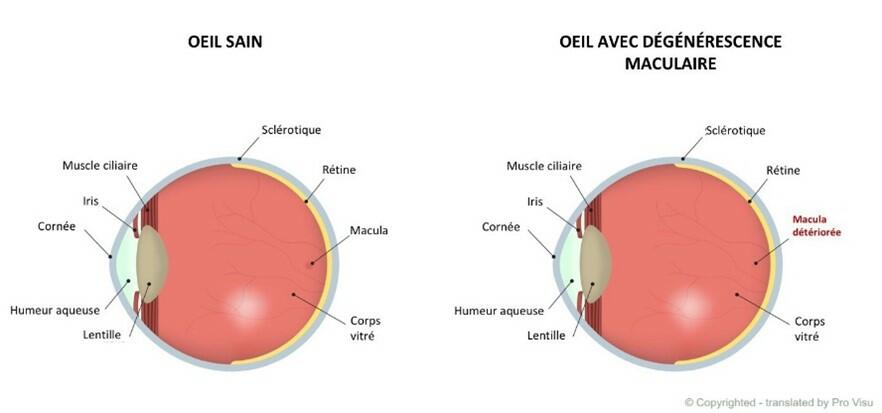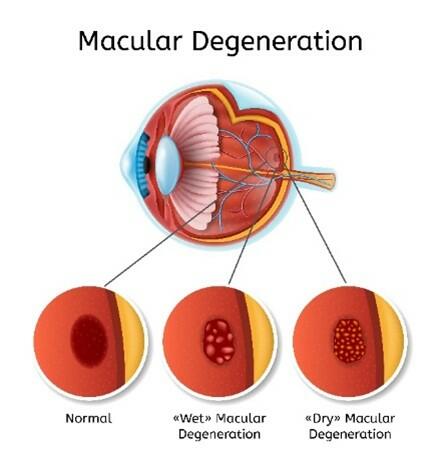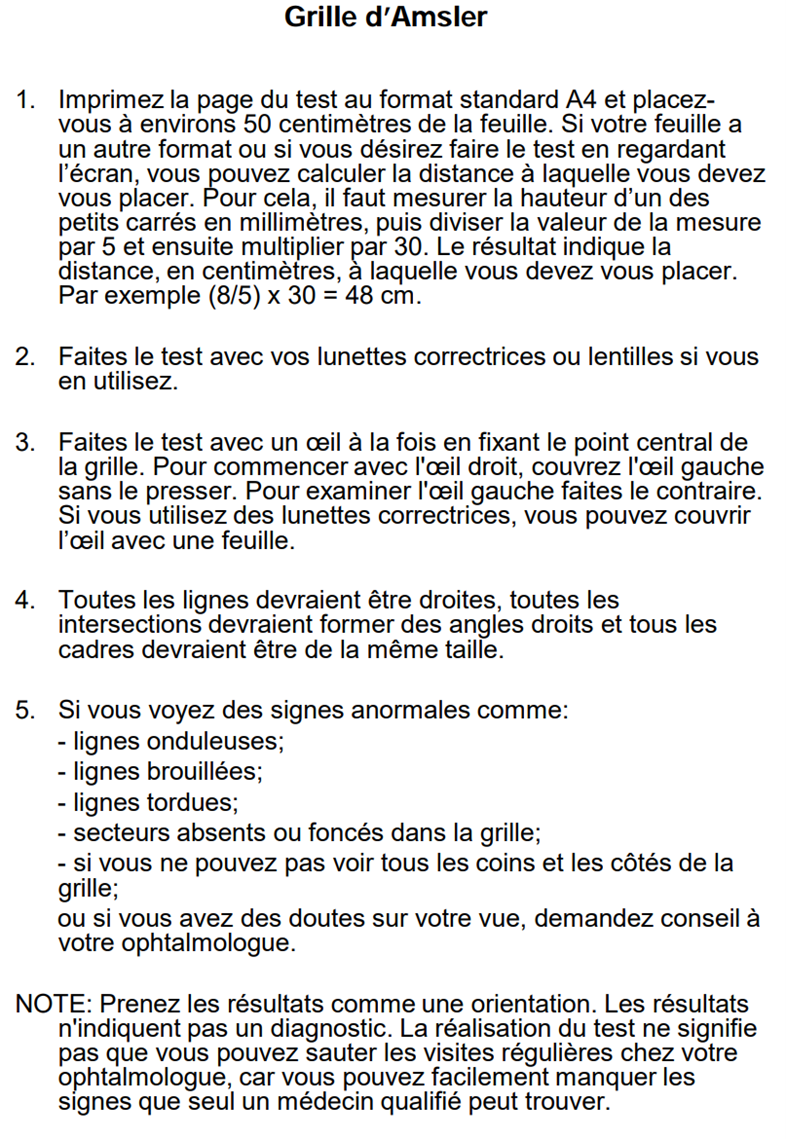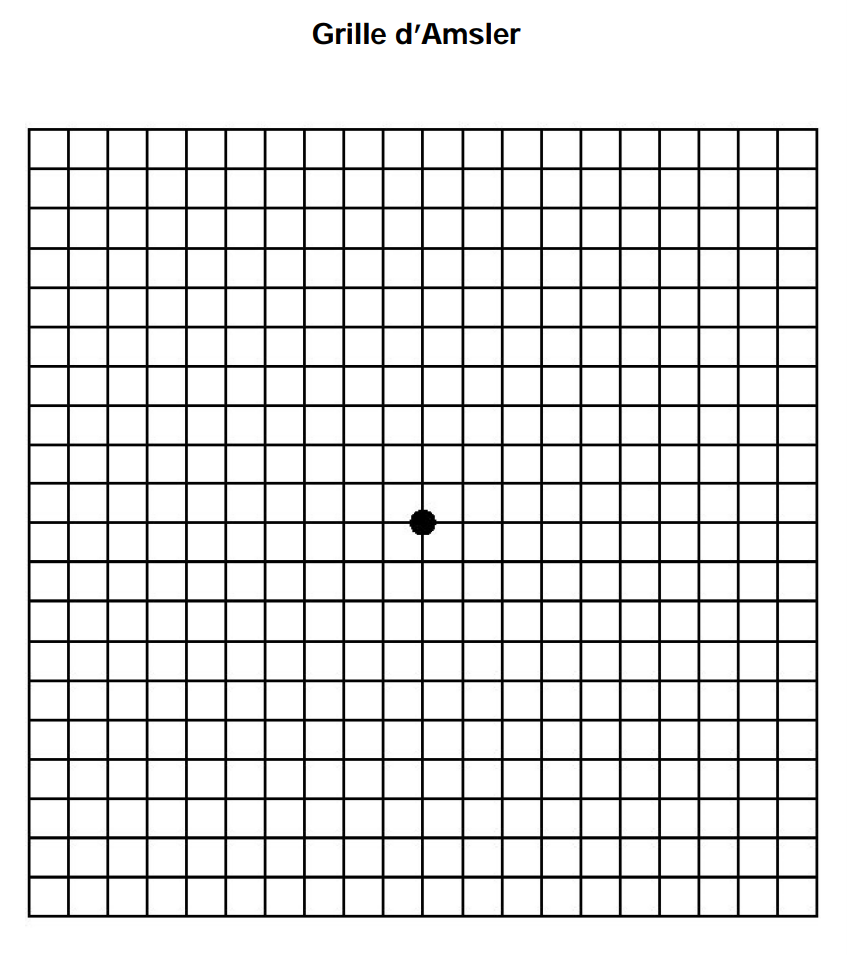Diseases
Age-related macular degeneration (AMD)
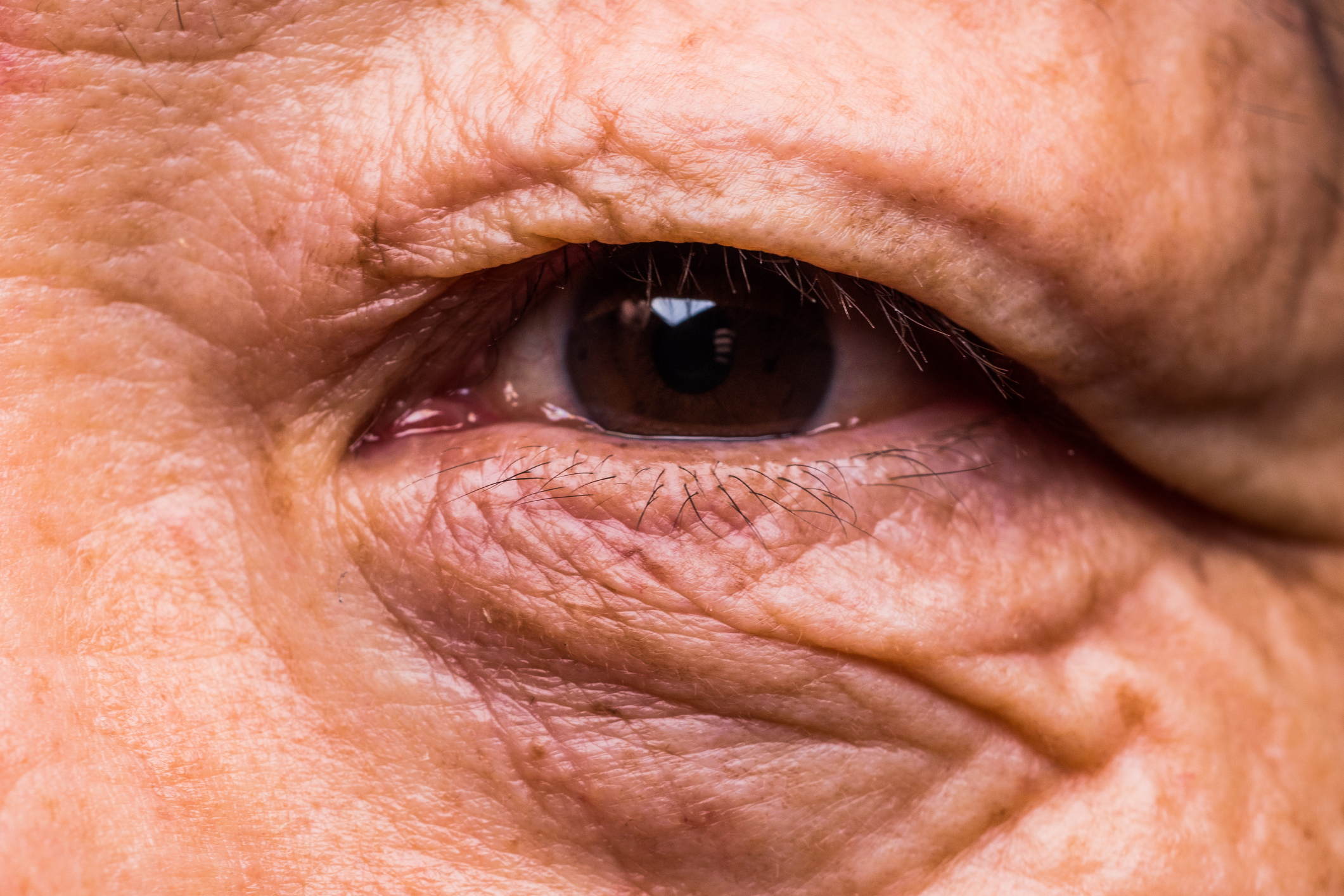
Other terms
- Macular degeneration
- Macular degeneration
- Senile macular degeneration
- Age-related maculopathy
Definition
Age-related macular degeneration (AMD) is damage to the macula, the central area of the retina. It can affect one or both eyes and is the leading cause of blindness in people over the age of 50 in developed countries.
AMD results in a progressive decline in vision that can lead to a loss of central vision, making it difficult to read, drive or perform any other task requiring fine vision.
There are two forms of AMD:
- Dry (or atrophic) AMD is the most common form of AMD (around 85% of cases). It corresponds to atrophy of certain areas of the macula linked to the degeneration of cells in the retina. This atrophy creates "holes" in the macula, visible by direct observation of the retina (fundus). It progresses slowly.
- Wet (or exudative) AMD is caused by the formation of abnormal blood vessels under the retina. This form is rarer but can progress very rapidly if left untreated. It is responsible for the majority of serious visual problems caused by AMD.
Causes
The main risk factors are age, genetic predisposition, being overweight and smoking. Other risk factors such as an unbalanced diet and excessive exposure to light may also play a role.
Symptoms
Dry AMD
Symptoms include:
- Distortion of straight lines
- Spots in the central visual field
- Decreased visual acuity
- Increased need for light to read
Wet AMD
The symptoms are similar, but they appear suddenly, within a few days or weeks.
Diagnosis
To diagnose AMD, the ophthalmologist looks for visual deformities using an Amsler grid and examines the back of the eye. If necessary, further tests will also be carried out.
Test your vision using the Amsler grid:
Treatments
There is no treatment for dry AMD. However, studies have shown that zinc, beta-carotene and antioxidant (vitamins C and E) supplementation in non-smoking patients can slow the progression of both forms of AMD.
For wet AMD, intravitreal injections of anti-VEGF are the treatment of first choice. They stabilise and, in some cases, restore a degree of visual acuity. In Switzerland, four compounds are authorised for this indication: brolucizumab, faricimab, aflibercept and ranibizumab.
Other treatment options include laser photo-coagulation, dynamic phototherapy and low-vision rehabilitation.
Researchers are working on a number of other treatment options for both the dry and wet forms of the disease. Various therapeutic avenues have shown promise in the pre-clinical stages. These include molecules that reduce oxidative stress, an inhibitor of amyloid aggregation or a non-steroidal inflammatory agent. Gene therapy and stem cell implantation are also being considered.
Frequency
The incidence of AMD increases with age: it affects around 10% of people over 65 and 25% of people over 75. Severe forms affect around 2% of people over 60.
There is no difference in prevalence between the sexes.
People with white skin and light eyes are more affected.
Prevention
The recommended means of prevention are to stop smoking and adopt a balanced diet rich in omega-3 and antioxidants, as well as regular exercise.
It is also advisable to consult your ophthalmologist regularly, even when there are no symptoms: every 2 to 5 years for young adults, then every 1 to 2 years from the age of 50.
References
DMLA (Dégénérescence Maculaire Liée à l'Age) | SNOF
Dégénérescence maculaire liée à l’âge (DMLA) ⋅ Inserm, La science pour la santé
Dégénérescence maculaire liée à l’âge | INCA
Dégénérescence maculaire liée à l’âge (DMLA) | Pathologies visuelles | Documentation | Ligue Braille
Dégénérescence maculaire liée à l’âge - Hôpital ophtalmique Jules-Gonin
Li JQ, Welchowski T, Schmid M, Mauschitz MM, Holz FG, Finger RP. Prevalence and incidence of age-related macular degeneration in Europe: a systematic review and meta-analysis. Br J Ophthalmol. 2020 Aug;104(8):1077-1084. doi: 10.1136/bjophthalmol-2019-314422. Epub 2019 Nov 11. PMID: 31712255. https://pubmed.ncbi.nlm.nih.gov/31712255/
Al-Zamil WM, Yassin SA. Recent developments in age-related macular degeneration: a review. Clin Interv Aging. 2017 Aug 22;12:1313-1330. doi: 10.2147/CIA.S143508. PMID: 28860733; PMCID: PMC5573066. https://www.ncbi.nlm.nih.gov/pmc/articles/PMC5573066/

